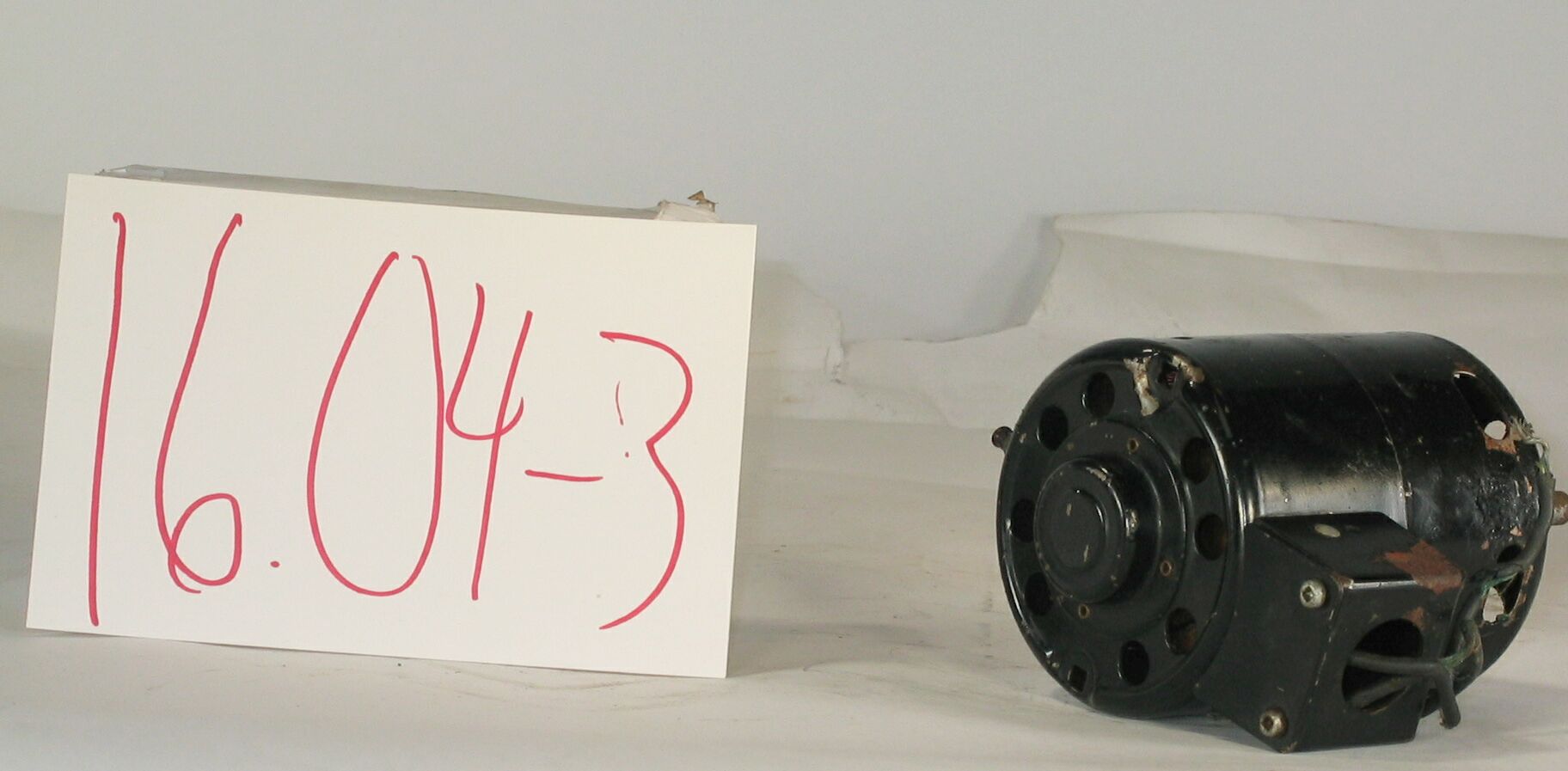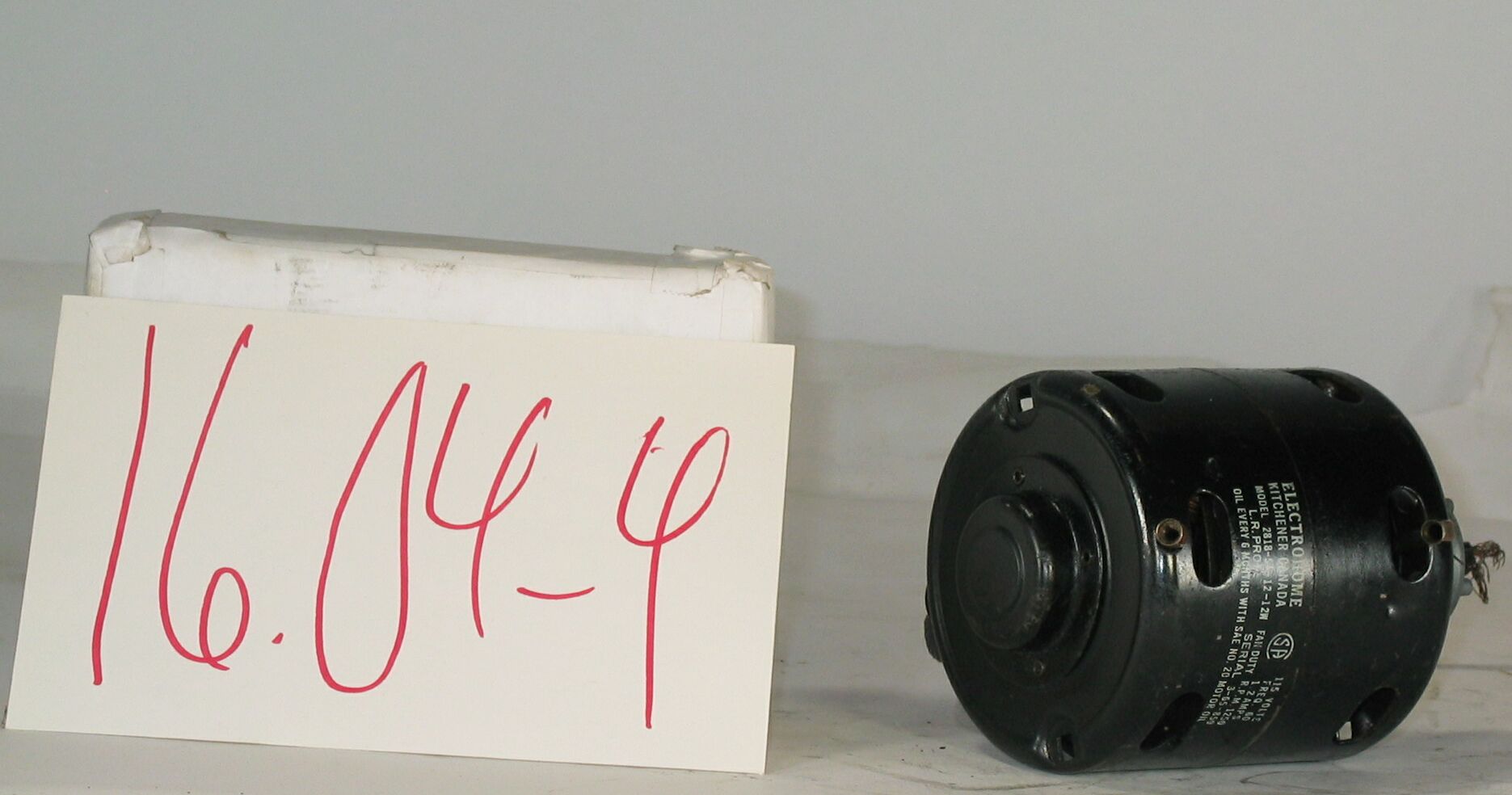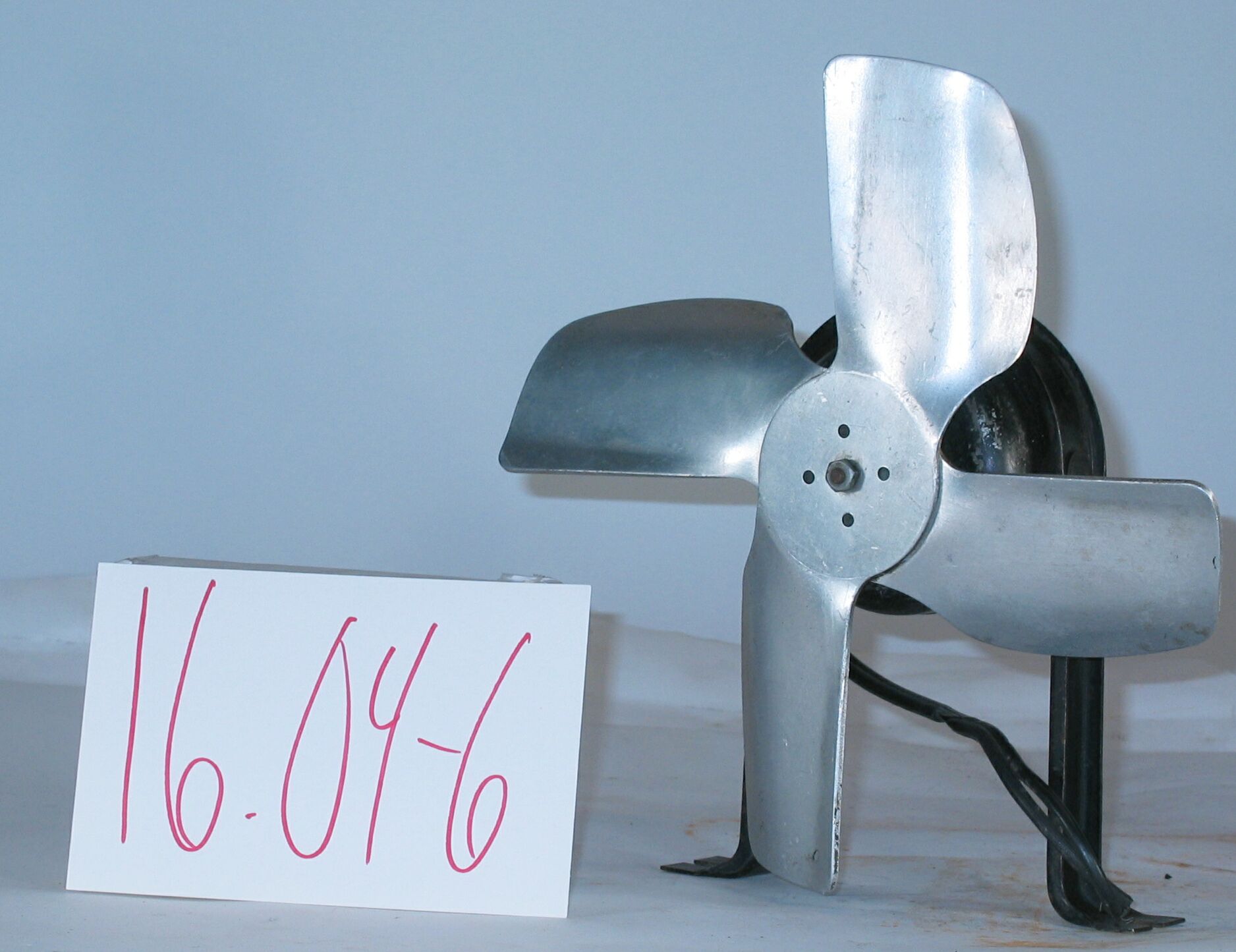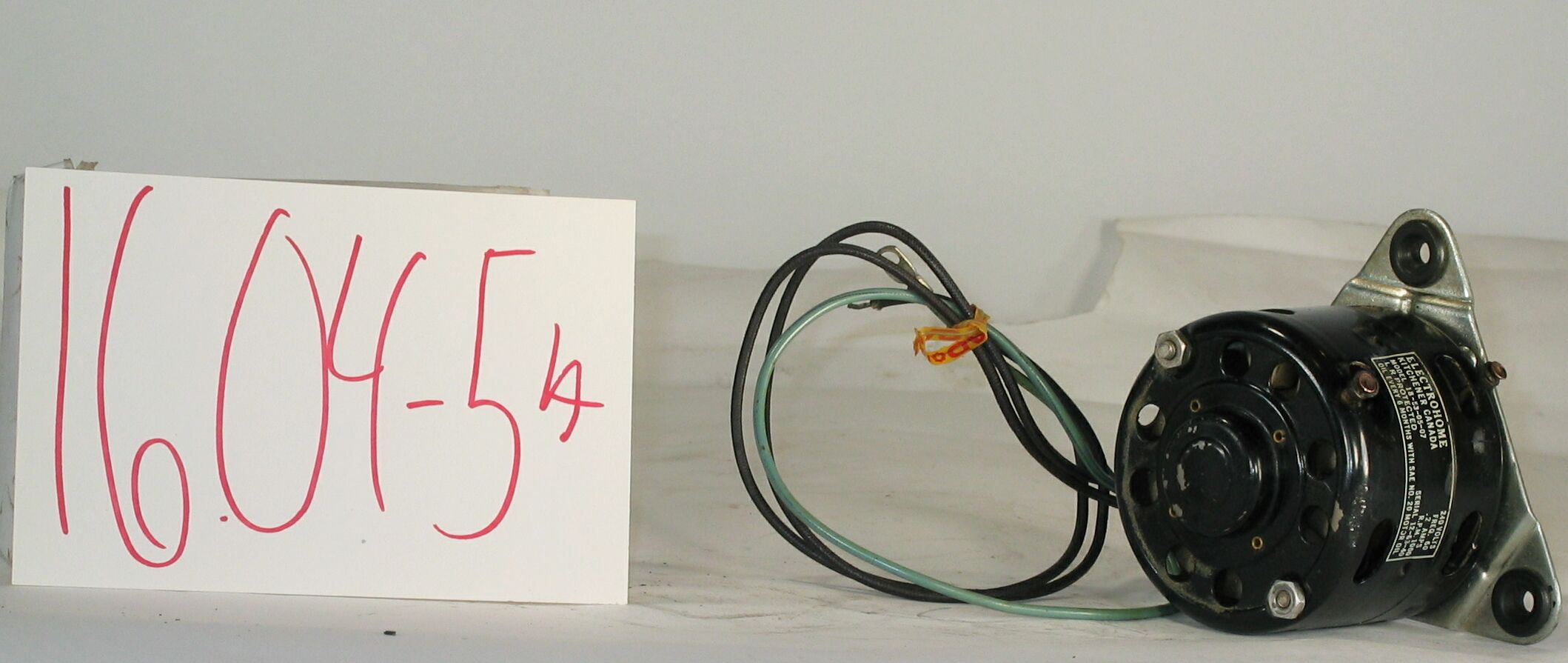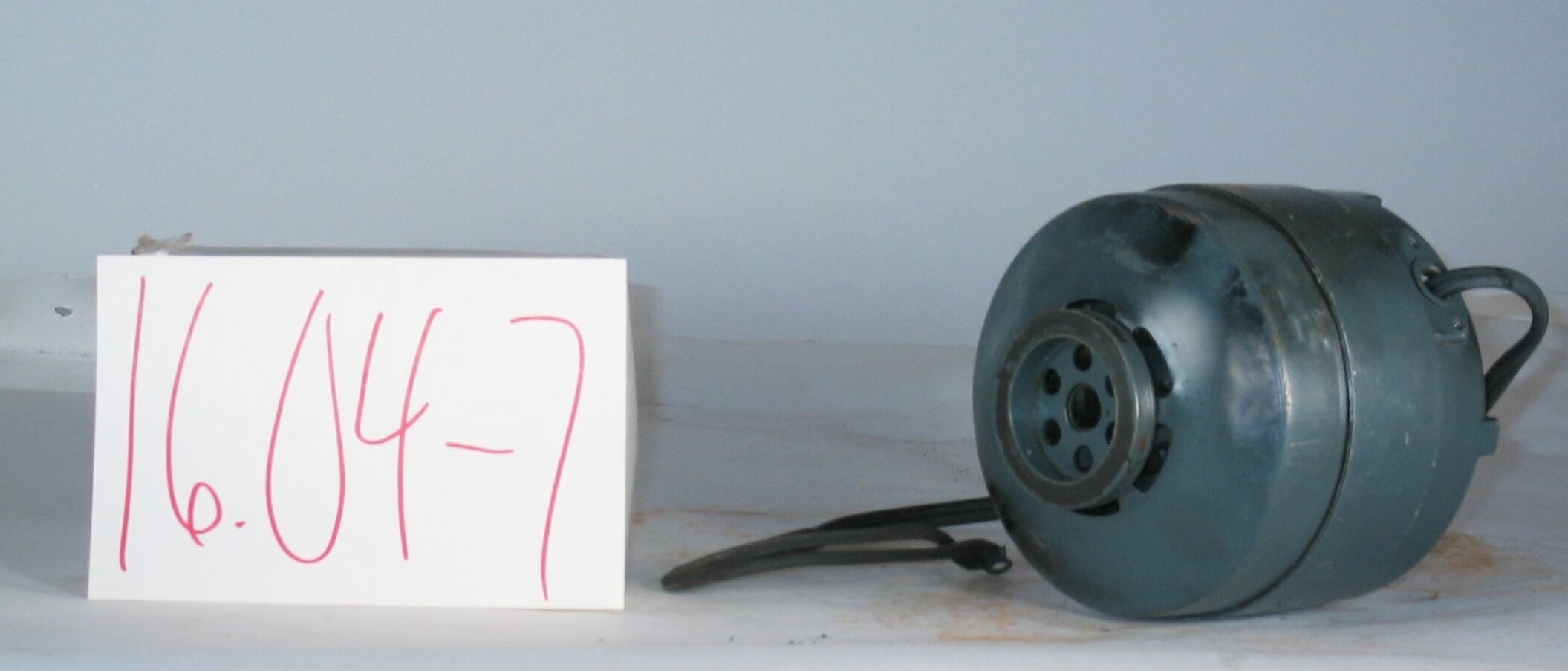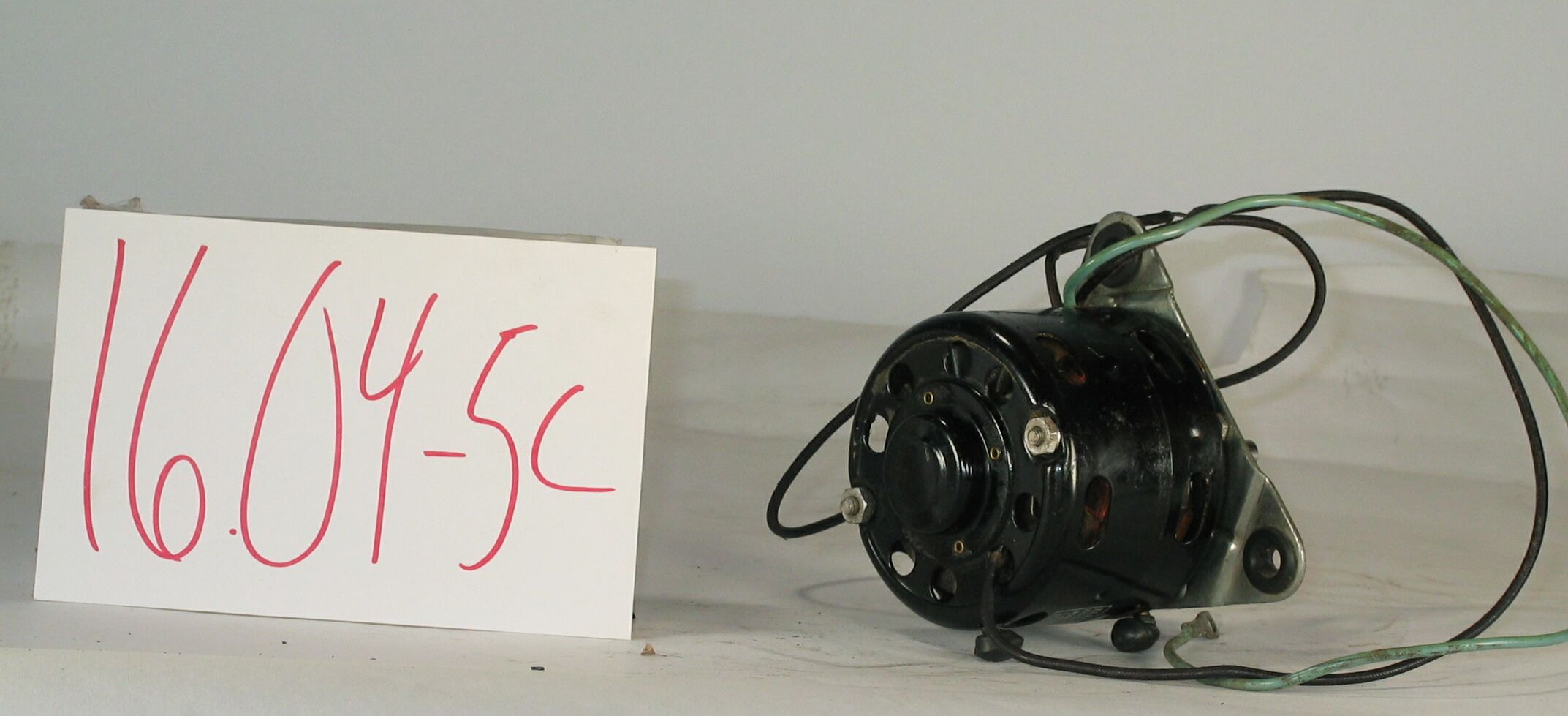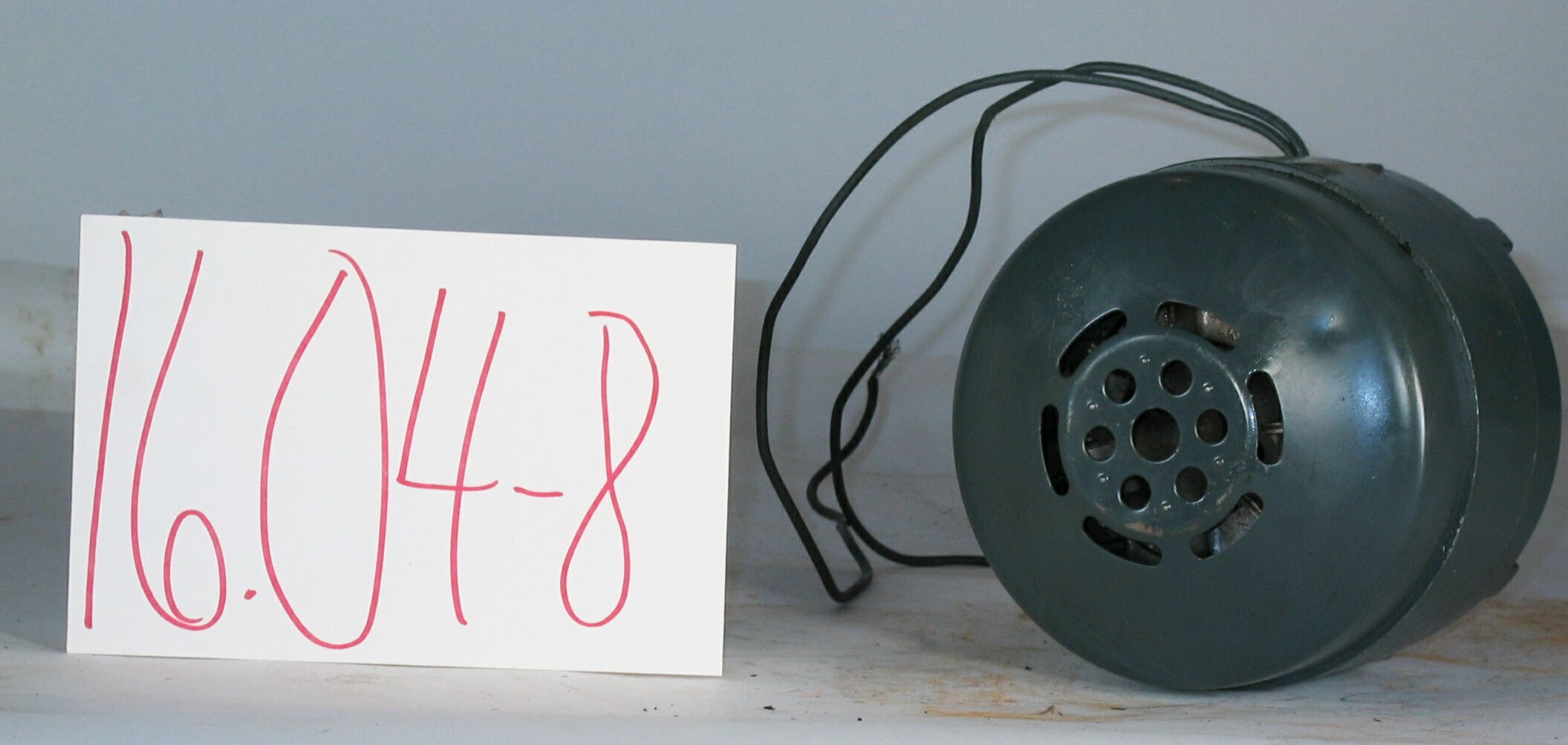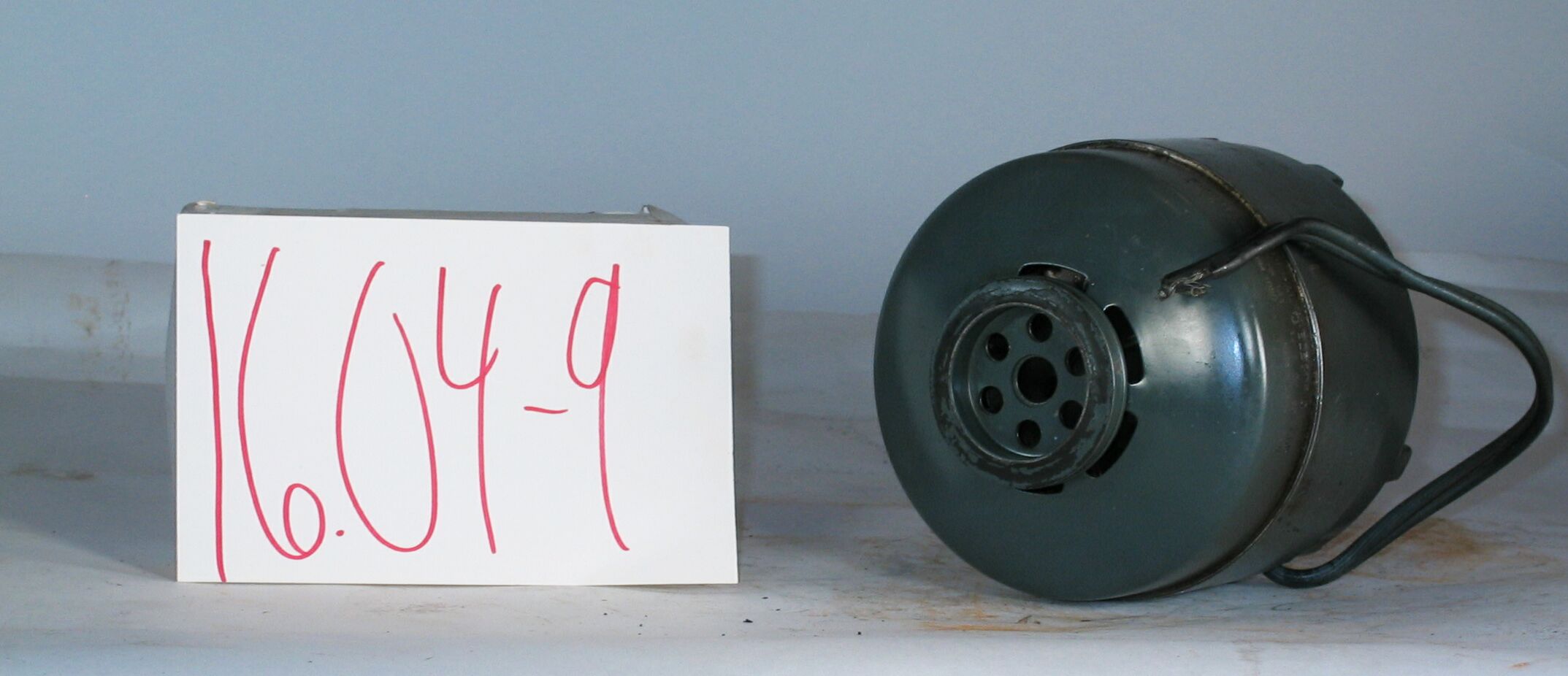16.04-10: Gorman-Rupp 1955 Shaded Pole Induction Motor
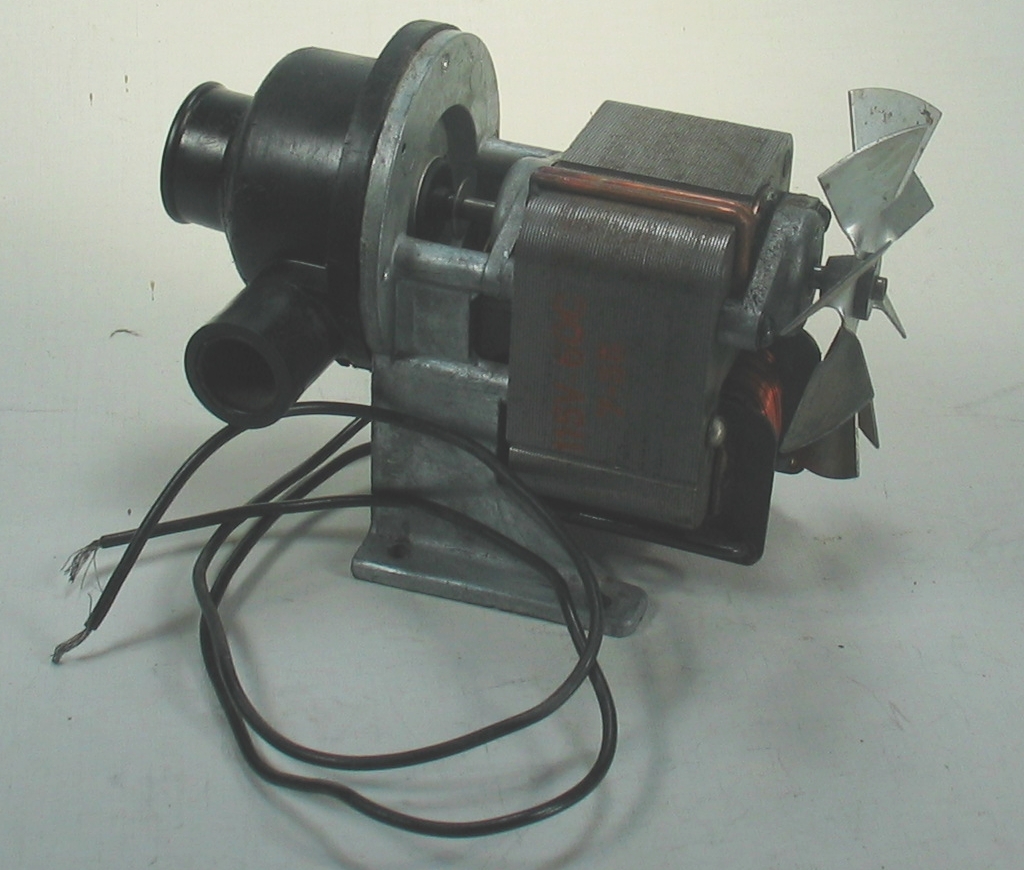
| HHCC Accession No. 2006.198 | HHCC Classification Code: 16.04-10 |
|---|
Description:
An early ‘embedded’ application of shaded pole induction motor technology, as an ‘inherent’ component of a small, direct drive, water circulating pump assembly. With plastic pump housing and impeller blade, and its own 8 blade cooling fan, it would be a marker of a new, trend setting, much more integrated approach to the engineering of electro-motive devices for the 1950 and beyond, in which the motor itself has become ‘unobtrusive’ part of a larger whole, Gorman-Rupp, circa 1955
Group:
16.04 Electric Motors - Single Phase, Shaded Pole and Universal
Make:
Gorman-Rupp
Manufacturer:
Gorman-Rupp Industries, Bellville, Ohio
Model:
Serial No.:
7-55
Size:
6 x 3 x 4’ h
Weight:
3.5lbs.
Circa:
1955
Rating:
Exhibit, education, and research quality, illustrating the engineering and construction of a mid 20th century, shaded pole, 60 cycle induction motor, in an embedded application as an inherent component of a small water circulating pump
Patent Date/Number:
Provenance:
From York County (York Region) Ontario, once a rich agricultural hinterlands, attracting early settlement in the last years of the 18th century. Located on the north slopes of the Oak Ridges Moraine, within 20 miles of Toronto, the County would also attract early ex-urban development, to be come a wealthy market place for the emerging household and consumer technologies of the early and mid 20th century.
This artifact was discovered in the 1950’s in the used stock of T. H. Oliver, Refrigeration and Electric Sales and Service, Aurora, Ontario, an early worker in the field of agricultural, industrial and consumer technology.
Type and Design:
An early embedded application of shaded pole induction motor technology as an inherent, unobtrusive component of a small water circulating pump assembly, 115 volts, 60 cycle With plastic housing and impeller blade, Equipped with its own 8 blade assembly cooling fan, Mounted on light weight die cast pedestal with four bolt mount
Construction:
Material:
Special Features:
Accessories:
Capacities:
Performance Characteristics:
Operation:
Control and Regulation:
Targeted Market Segment:
Consumer Acceptance:
Merchandising:
Market Price:
Technological Significance:
An example of an early, trend setting, ‘embedded’ application of shaded pole induction motor technology, as an ‘inherent’ component of a small, direct drive, water circulating pump assembly, marking the movement to more integrated and holistic approach to the engineering of electro-motive devices for the 1950 and beyond, in which the motor itself has become ‘unobtrusive’ part of a larger whole. A rare view of an early embedded shaded pole motor application, engineered as an inherent component of a small direct drive, water circulating pump assembly. Seen as cost saving measure, such assemblies, also made more economical on 60 cycle, would become increasingly popular, following frequency standardization in the late 1940’s in Canada on household appliances - for example on automatic dish washers and laundry equipment.
The single phase alternating current induction motor has a public face of great simplicity - no commutator, brushes, governor nor switching mechanism to get it started, simply a field winding and solid state [squirrel cage] rotor mounted between two bearings. Its ‘shading pole(s)’ consisting of single turn of wire strategically placed around its pole face(s), is all that is required to start rotation. Yet the shaded pole induction motor is a marvel of early 20th century electrical design engineering. [See Reference No. Chapter XIII, P. 297]
Industrial Significance:
Its low cost and unique speed-torque characteristics made the shaded pole induction motor ideal for small fan and pump applications of 1/20th HP or less. A ‘one-of-a-kind’, ‘just-in-time’ technology, it quickly found a special place in 20th century appliances and electrical equipment, where air and water circulation, air conditioning and ventilation where imperatives.
Socio-economic Significance:
Socio-cultural Significance:
The shaded pole induction motor quickly became an integral, often unobtrusive, component part of the appliances and equipment that increasingly invaded the Canadian home and place of business starting in the early 20th century. Typically custom engineered as component part of a larger piece equipment to ensure air circulation and ventilation, the shaded pole induction motor has enabled much and in so doing has change much of life for Canadians, as an essential part of our 20th and 21st century technological experience. Of equal significance is the ‘shaded pole synchronous motor’, which made possible the electric clock and a multitude of automatic time controlled devices throughout the 20th century [see for example Group 12.08 and 12.10 control devices]
Donor:
G. Leslie Oliver, The T. H. Oliver HVACR Collection
HHCC Storage Location:
Tracking:
Bibliographic References:
‘Fractional Horsepower Electric Motors’, Cyril Veinott, McGraw Hill New York, 1948, Chapter XIII, P.297 ‘Rewinding Small Motors’, Daniel Braymer and C.C. Roe, McGraw Hill, 1932 ‘A course in Electrical Engineering, Volume II, Alternating Current’, Chester Dawes, McGraw Hill, 1934, Starting single Phase Induction Motors, P. 362. ‘The Fractional Horsepower Motor and its Impact on Canadian Society and Culture’, G. Leslie Oliver, Material History Review, Vol. 43, Journal National Museum of Science and Technology, 1996.


